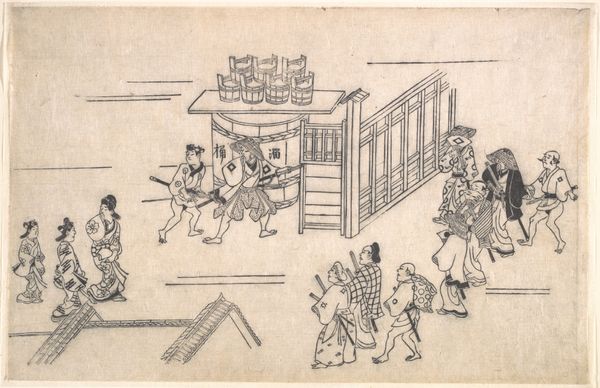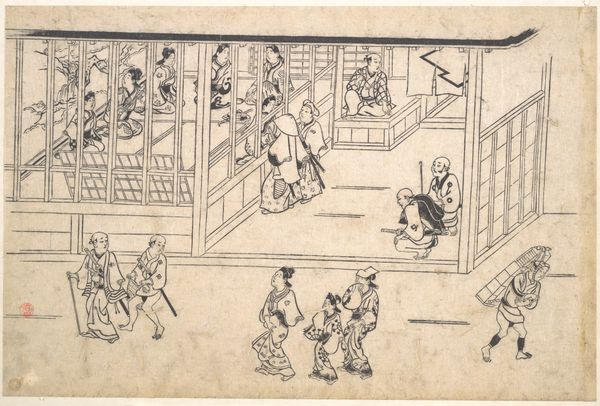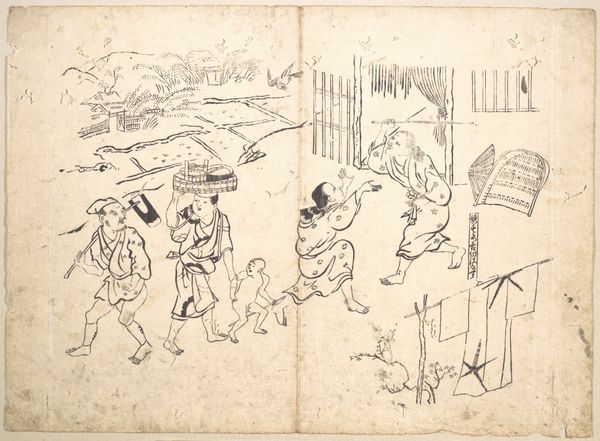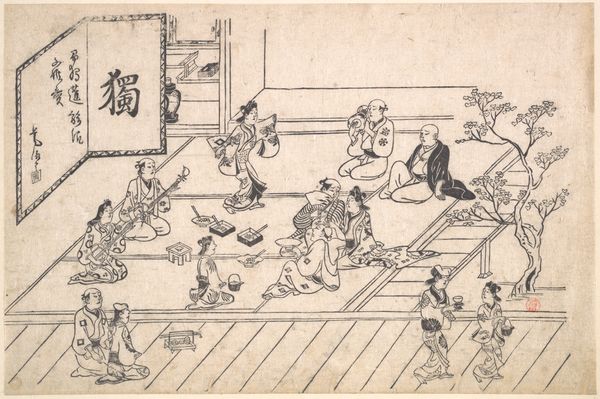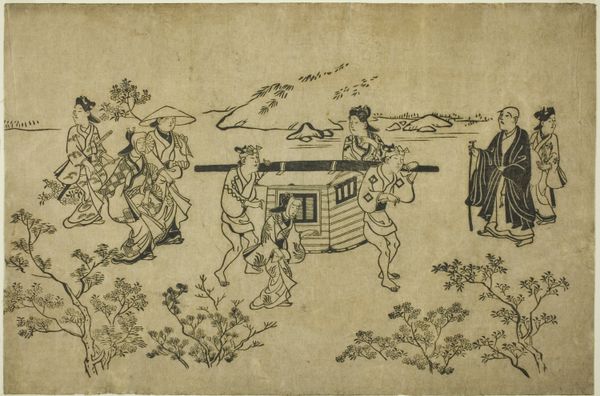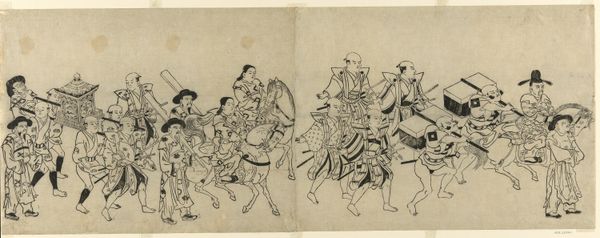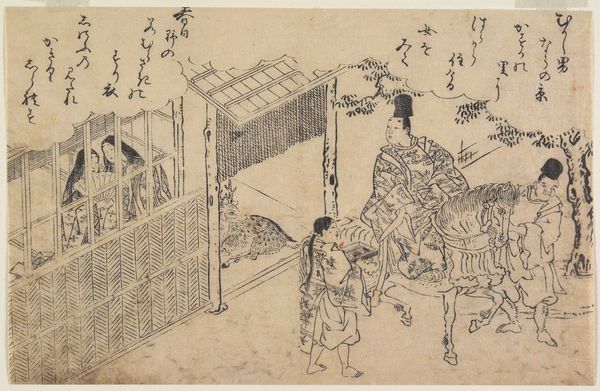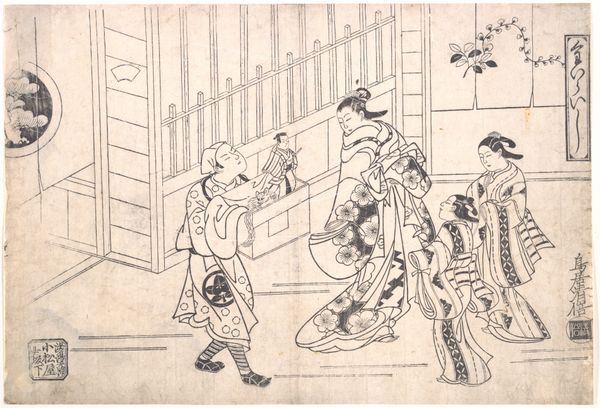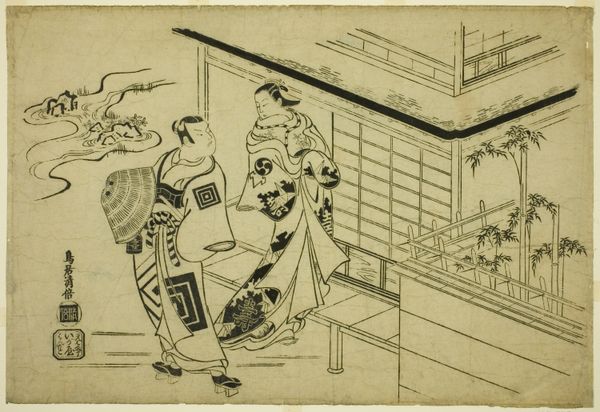
The Entrance to Ageya-machi, from the series Scenes in the Yoshiwara (Yoshiwara no tei) 1681 - 1684
0:00
0:00
print, woodcut
# print
#
asian-art
#
ukiyo-e
#
japan
#
woodcut
#
line
#
cityscape
#
genre-painting
#
building
Dimensions: 10 1/8 x 15 1/5 in. (25.7 x 38.6 cm)
Copyright: Public Domain
Curator: Take a moment to observe this intriguing print by Hishikawa Moronobu, created sometime between 1681 and 1684. Titled "The Entrance to Ageya-machi, from the series Scenes in the Yoshiwara," it’s an early example of ukiyo-e woodcut, currently residing at the Metropolitan Museum of Art. Editor: My initial impression is one of detailed linearity. The intricate patterns of the rooftops and the kimono folds are striking, yet there’s a distinct lack of tonal variation which gives it a stark, graphic quality. Curator: Indeed. The linearity is characteristic of Moronobu's style and early ukiyo-e in general. Notice how the composition directs your gaze: the converging lines of the buildings lead us into the Yoshiwara district, a pleasure district of Edo. These visual devices shaped how the audience perceived such spaces. Editor: The subject matter is compelling. The figures, especially the attendants and their client, are stylized almost to the point of abstraction. Are we to interpret this formal detachment as social commentary or mere aesthetic preference? Curator: It speaks more to the conventions of ukiyo-e at the time. Prints like these, readily accessible and produced for a burgeoning merchant class, focused on the ephemeral world, often glorifying its actors, so the perspective wouldn't tend toward overt criticism, yet this normalization is also telling. Editor: Right. The arrangement feels like a stage. These details -the high vantage point and the exaggerated costumes – work together, flattening and rendering figures like theatrical types. It reads as constructed rather than spontaneous. Curator: The figures almost serve as emblems within a clearly defined framework that, indeed, creates its own kind of heightened reality. What’s particularly of note for art historians is the relative austerity. Compared to later developments, like the colorful woodblock prints of Harunobu or Utamaro, this appears understated. It’s still rooted in calligraphic aesthetics. Editor: Perhaps that's what gives it its distinct character—a sense of restraint that simultaneously reveals and conceals the layers of meaning embedded in the image. Thank you for highlighting its specific qualities; they clearly echo not just aesthetic preferences but social conditions. Curator: My pleasure. Viewing art through both form and context allows us a broader appreciation and, ultimately, understanding.
Comments
No comments
Be the first to comment and join the conversation on the ultimate creative platform.
